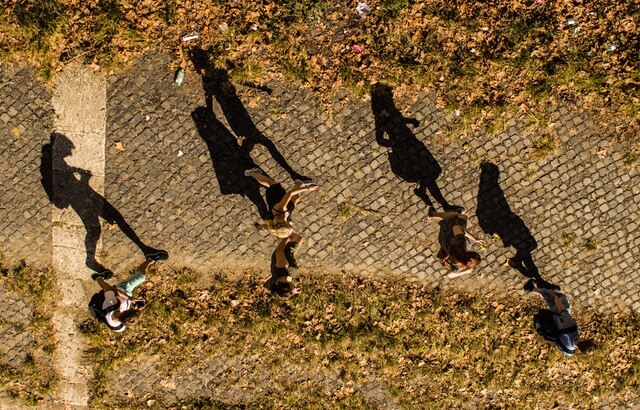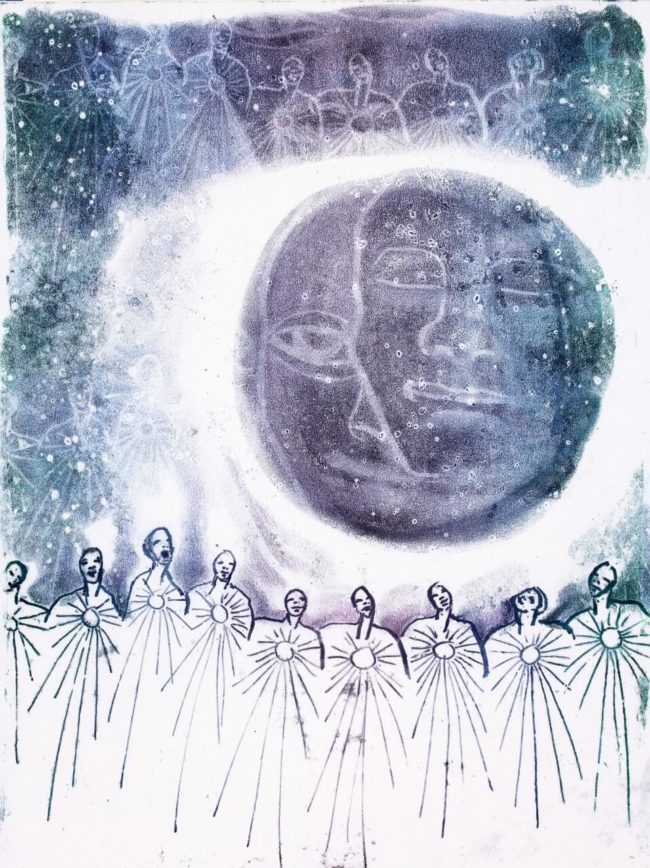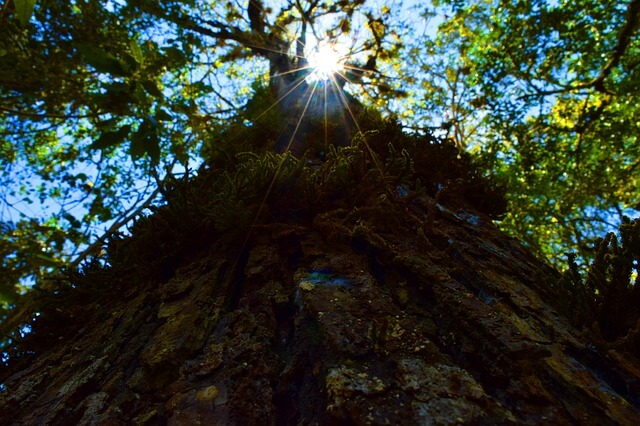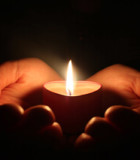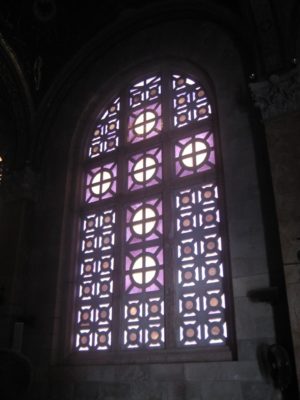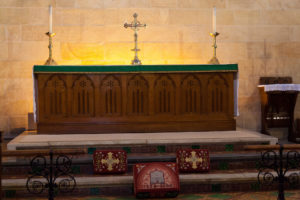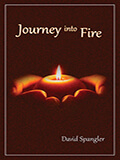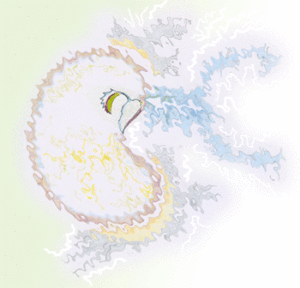Interview By Annabel Chiarelli
ANNABEL: Can you elaborate on “wrongly made” thought forms? For instance, is there such a thought form around the idea of racial prejudices? Also, can you clarify the distinction between a thought form as a thing that can be destroyed as opposed to a being that can be redirected or redeemed? Whose decision is it to destroy a thought form? Is this something that we as embodied humans can help with or is this something better left to our subtle allies?
DAVID: Let me begin by defining a thought-form or energy construct. A thought-form is simply any pattern of energy brought into existence by thought; it is energy of some nature molded and shaped in a particular way by an act of thinking and feeling. It is an energetic artifact, no different from things we design and make here in the physical realm. It is not a living being, although--just like our own artifacts--it is composed of living energy.
We create them all the time. If I see an ad for something in a magazine and think, "Wow, I'd like to have that," I've created a thought-form. But unless I put some emotional and mental "juice" into it, it won't last. I'll turn the page, see another ad for something else that I find more desirable, and a whole new thought-form is created around that object while the first thought-form now fades out of existence.
These kind of temporary thought-forms are being made and dissolved all the time. It's when a particular pattern of thought and feeling becomes a habit, something held and repeated over and over, that it starts to become a construct in the subtle worlds such as my inner colleague was describing. In other words, there needs to be some persistence and consistency of thought and imagination and some intent for such a construct to take shape and develop a potentially autonomous existence.
This is a complex topic and I've seen whole books written on this one subject alone, so I can't cover it all in this interview. However, for our purposes in discussing subtle outreach and subtle activism, let me describe two general kinds of energetic constructs.
The first arise from cultural habits and are collective in nature. You used the example of thought-forms that embody racial prejudices. As collective cultural constructs, such images can stimulate corresponding thoughts and feelings within individuals. A feedback loop is established between the thought-form and individual minds that attune to it.
In other words, if a collective thought form around African-Americans in the United States is one of fear, then if I am an individual influenced by this thought-form, I can have fearful thoughts and feelings when I see a black person on the street. The energy of this fear then feeds the thought-form itself, keeping it in existence.
Now, collective thought-forms such as this can be reduced in potency and in their ability to affect individual minds by subtle world intervention such as my colleague described, but they cannot be destroyed or mitigated entirely since they are also being generated and supported by incarnated humans. Energy hygiene is not enough here. There needs to be social change, institutional change, education, changes of mind and heart, and so on.
In other words, a collective thought-form being actively supported and energized by human beings cannot be erased by subtle means alone, speaking generally. I can't get rid of a habit like smoking if I continue to indulge and support it by smoking! So human level interaction and change is absolutely needed--physical activism, if you wish. But if this is present, then subtle forces can intervene more effectively and destroy the constructs themselves, as my colleague* described.
I should add here that thought-forms can be good and helpful or negative and unhelpful. The image of Uncle Sam is a thought-form of the American character; the American flag is another, one that can inspire love of country and patriotic acts. Every country has its collective thought-forms from which it draws its identity and positive energies.
The second kind of thought-form is the one that is deliberately created to achieve a specific end. You might do this as part of a manifestation project, for instance, in which you project a strong and clear image of what you wish to manifest into the subtle worlds. You might form a positive self image of the kind of person you wish to be, and that becomes an inspirational thought-form in your life.
But some thought-forms are created and shaped by negative and pathological thoughts. For instance, ISIL is deliberately propagating thought-forms of violence through social media but also, seen from the inner worlds, through the collective thoughts and intents of those who are part of that movement projected out into the mental environments of humanity. An individual can be radicalized and become violent partly through the influence of images on social media but also through the energies--the thought-forms of hatred and revenge--that lie behind those images.
Or someone becomes a mass killer, something happening with greater frequency, unfortunately, here in the United States. When interviewed the person may say, "I don't know what happened. I just felt I had to kill people." They can rationalize this in many ways, but fundamentally they were acting out of an energetic impulse which more than likely came from a "mass killing thought-form." The thought-form and its energy triggered or stimulated the decision to kill within the mind and emotions of an individual who was vulnerable and predisposed in some manner to such a prompting.
Such a thought-form could be deliberately created by someone filled with hate and violence, or it could be inadvertently created by thoughts of killing which vibrationally "clump together" through resonance in the subtle worlds and become an autonomous construct of energy seeking outlet in the human world through acts of killing. It's these kinds of thought-forms specifically that my colleague* was thinking of when he spoke, as there are many of them floating about.
Remember that there are just as many—indeed, more—thought-forms that are positive, inspirational, healing, and helpful in nature, so it's not like we're surrounded by a cloud of energetic constructs all seeking to do us harm. Far from it. But harmful constructs do exist.
What makes a thought-form something that can be destroyed, as differentiated from a being who can be redirected or redeemed, is that it doesn't possess life. It's like a robot. It has been programmed to act in certain ways, and it cannot do otherwise. It can have the appearance of agency in that it will seek to fulfill its "programming" and it can have an appearance of life simply because it is composed of living energies that seek sustenance. Remember, what is being destroyed is the form or organizing principle and intent that is holding the thought-form together, not the living energies that comprise it.
As to who decides to destroy them, there are guardian beings, both angelic and human souls, who have this as a task; think of them as a subtle world police force or as subtle janitors. They don't have carte blanche, for they cannot interfere with the workings of karma or human free will, but there's a lot of psychic garbage in the band of energy I call "The Scream" which can be cleaned up. Also, since you asked, an embodied human being who knows what he or she is doing can certainly disperse and destroy a thought-form.
ANNABEL: Can you elaborate on this strong place of soul? Are there instances where the warrior image can be helpful or is it something that should be completely avoided?
DAVID: Let me say that I come from a military background, raised on an American air base in Morocco, so the term "warrior" is not a red flag for me. And it's not particularly bothersome to my inner colleagues, though they wouldn't necessarily use that term themselves. If seeing oneself as a warrior helps a person evoke courage and strength and a positive self-image, then it can be helpful.
However, when doing any kind of subtle work, militaristic images are rarely helpful. We need to be very aware of what our own energy is doing within us and around us; we need to be mindful of what we're generating and projecting, or put another way, mindful of the "flavor" we impart to our inner work. And in this regard, militaristic images of any kind tend to give an adversarial "flavor" that can ultimately work against the very healing, harmony, or wholeness we seek to foster.
Yes, redemption and healing are keywords in subtle work. No one is ever abandoned, no matter, as you say, how complex or lengthy the process may be of restoring their wholeness and connectedness to the Sacred. And this should definitely inform our attitudes towards each other. For instance, I detest all that ISIL stands for and the violence and hatred they are promoting, but I hold the individual souls who are part of that pathological collective in love. That soul will deeply regret the harm it is causing and will seek redemption at some point. My prayer is that my love will ease that transformation when that soul is able to undergo it. At the least, I do not want to burden that soul with projections and thought-forms of hatred and fear from me.
But I would not hesitate to stop that soul's personality from doing harm in the world if I had the opportunity to do so, nor would I hesitate to protect others, on any level, from the malevolent energies this group is collectively and individually projecting into the world. I would just not go about it from a militaristic attitude. There are better ways energetically speaking. As you say, neutrality and strength are important.
Maybe I should say something about what I mean by neutrality. I don't mean being inert emotionally or not having feelings. I can be very passionate in my neutrality! What I'm talking about here is a condition of energy, what really should be seen as a kind of "subtle chemistry." What I don't want is to provide any resonance in my own energy field to which something like the ISIL thought-forms could attach.
Neutrality is not armor, it's not a shield, it's just non-interaction, non-reactivity. The classic phrase for this is to "Stand in the Light" which by its very nature disperses the darkness without actually "fighting" it. If there are shadows in my room, they disappear when I turn on the light or when the sun comes out. The Light is not "against" these shadows; it is neutral or non-reactive. But the nature of Light is that a shadow cannot exist in it. The Light doesn't have to "hate the darkness" in order to remove it by the nature of what it is.
This comes back to what I said earlier about altering the environment so that a particular kind of organism or force cannot live in it. Hatred cannot live in an environment of love, energetically speaking. (And part of our challenge is that we translate these words into emotional and psychological terms, which turns them into something else, something quite different from their energetic quality. We need to learn how to think in terms of an energy world, as well as a psychological and a physical one.)
Anyway, neutrality doesn't mean a lack or weakening of intent, and when speaking of strength in this context, I'm really speaking of clarity and firmness of intent. Think of Gandalf in the Mines of Moria saying to the Balrog, "You shall not pass!" Now that was a very clear and strong intent!
Click on the links to read Part 1, Part 2, Part 3 and Part 4 of this interview.



